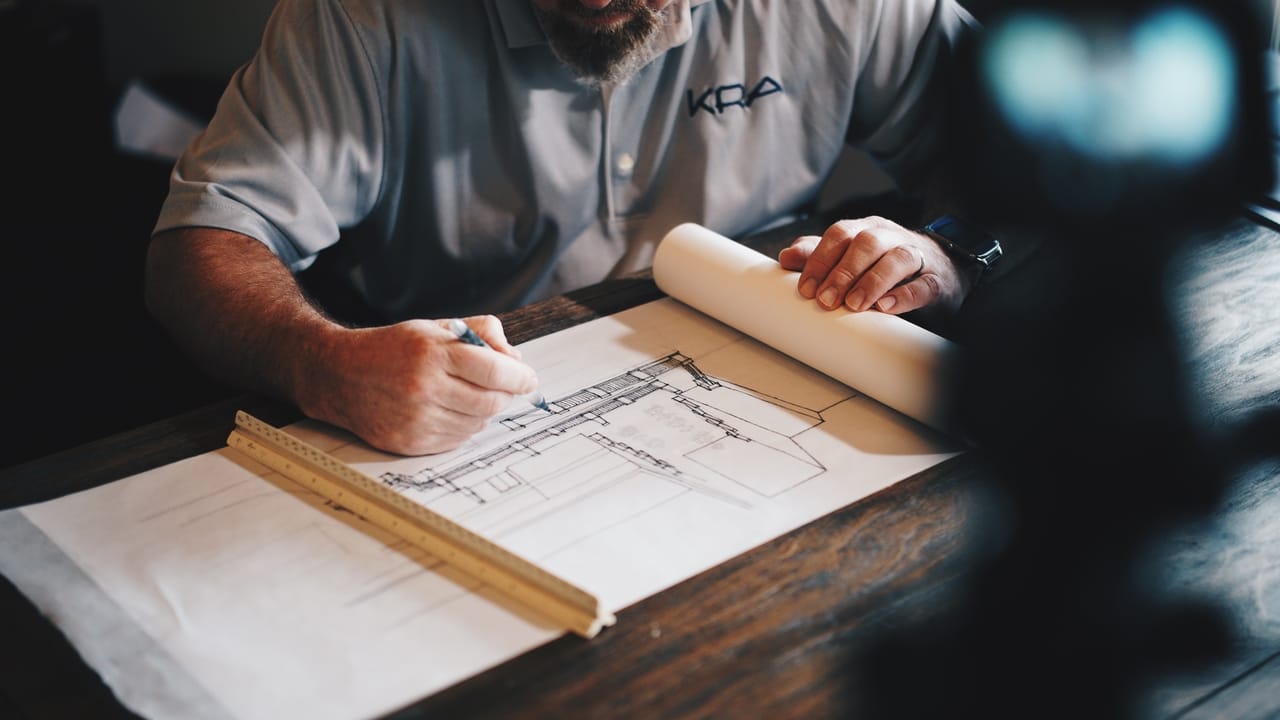
Starting a commercial building project is a major investment, and success depends on more than a solid plan. It requires smart decision-making from day one. Before you pick a site, buy land, or break ground, take time to think through these 12 essential factors. They’ll help you avoid costly surprises, align your budget with your goals, and set your project up for long-term success.
Before Choosing a Site
Before you visualize your building on a specific lot, ask yourself the following four questions about the location.
1. Will your building be accessible to clients?
Location affects everything — from lead generation to attracting qualified employees. Be sure your new commercial space is easily accessible for both clients and staff. Accessibility can play a key role in the long-term success of your operation.
2. Does the site meet zoning requirements?
You may have a great design in mind, but if it doesn’t comply with local zoning laws, you’ll face costly changes or delays. Check with your local planning and zoning office to confirm that your intended use and design are allowed.
3. Are utilities like water and sewer readily available?
Infrastructure access isn’t flashy, but it’s critical. Confirm whether water, sewer, and emergency systems like hydrants are already in place. If not, extending utilities can significantly increase construction costs. Contact your local resource management department to gather this information.
4. What’s the condition of the soil?
Soil stability directly affects your foundation. Hire a soil engineer to evaluate the site and determine if pile construction is needed. If so, plan for additional time, labor, and cost to install deep foundation supports.
Before Deciding to Purchase
Once you’ve found a location that’s zoned properly and has the necessary infrastructure, it’s time to think about the financial side of the purchase.
5. Can you afford to build in this location?
Location-specific construction costs vary widely. Evaluate your full budget — including site development, permits, and contingency funds — before you commit to land in a specific area.
6. Are your financial stakeholders aligned?
If partners or investors are involved, bring them into the decision-making process early. Share projections, timelines, and your reasoning behind the site and design so they feel confident and informed.
Before Planning Construction
With the location locked in, it’s time to plan your custom commercial building in detail. This stage is where good planning will save you serious time and money.
7. Will nearby improvements affect your construction timeline?
Check for any scheduled road construction or city infrastructure updates near your site. Delays in access could impact material deliveries, contractor timelines, and the overall pace of your project.
8. Can you find architects familiar with this site’s zoning and environment?
Choose someone with experience in your local area, and request detailed quotes and schedules upfront. This will help minimize design revisions and streamline communication. For more advice on early builder collaboration, check out our guide to what to cover during your initial meeting with your builder.
9. What project phases are required based on the site, budget, and design?
Outline each project phase — from site prep and foundation to structural framing and mechanicals. Engage with trusted structural, mechanical, civil, and electrical engineers early to reduce miscommunication and avoid cost overruns.
10. Can you secure the necessary building permits?
Some designs require multiple rounds of revisions to meet permit requirements. Consider hiring an expediter or working closely with your architect to navigate the permitting process efficiently.
11. Is your design realistic for your budget and timeline?
A well-informed architect will guide you through budget-aware design decisions. Don’t hesitate to lean on their experience when it comes to value engineering and long-term maintenance planning.
12. Will your building be approved for occupancy?
Make sure you or your contractor understand what’s required to pass final inspections. This includes sign-offs from building code officials and the proper handling of lien releases from subcontractors and vendors.
Ready to Take the Next Step Toward Your Commercial Building?
Designing a commercial post-frame building requires a thoughtful approach — from location and budget to infrastructure and finishing touches. At Pro-Line Building Company, we help you navigate every step of the process with confidence.
Whether you're building an office, retail space, or multi-use facility, we offer comprehensive services that prioritize quality, communication, and results. Learn more about how we support new and growing businesses on our Commercial Buildings page, or see real-world examples in our project portfolio.
Contact us today to get started on your next commercial project.
.svg)